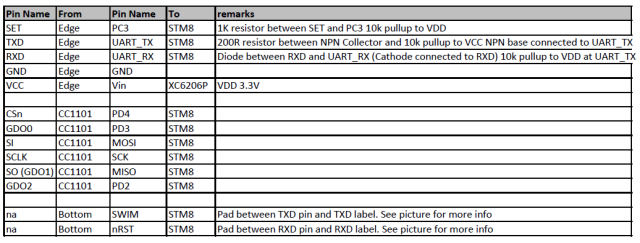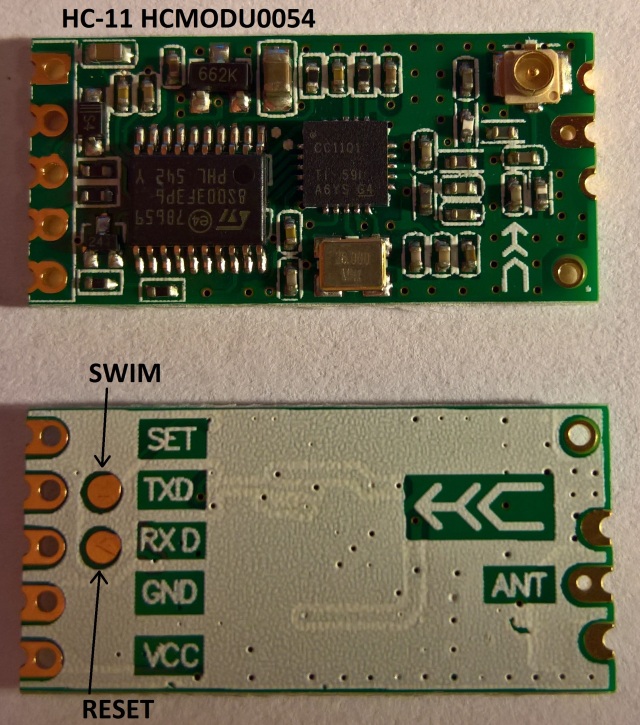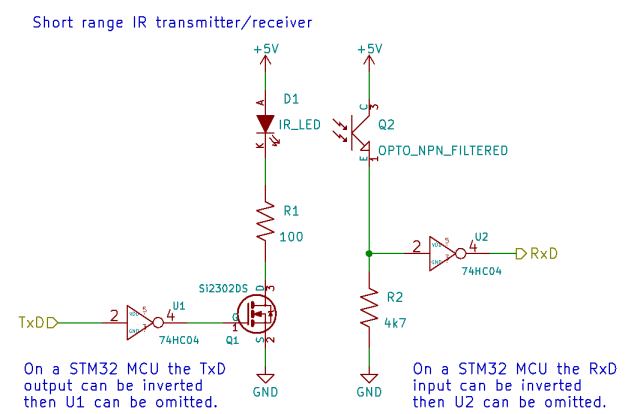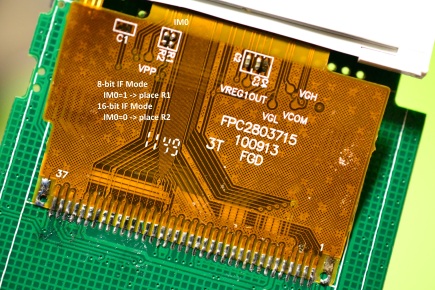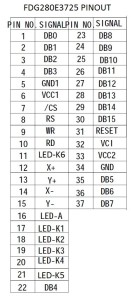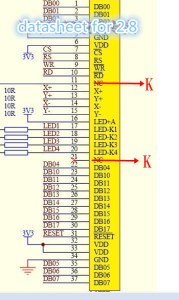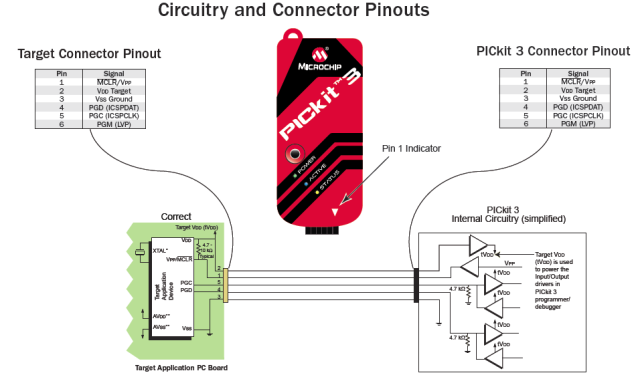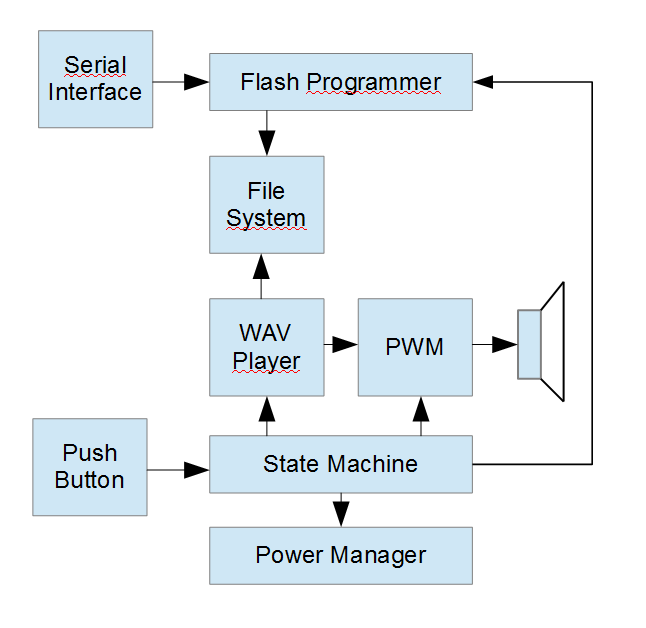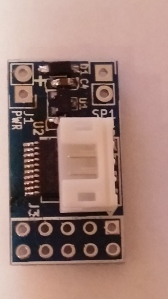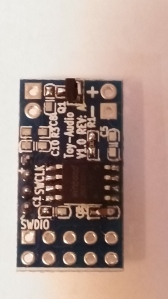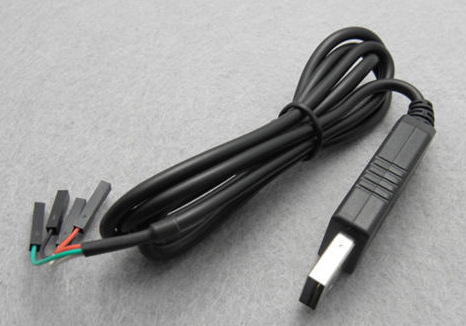I could not find USART1 example code using the STM32 Standard Peripheral Libraries for a STM32F0 device. Therefore I’ll post mine…
usart.c
#include "usart.h"
/**
**===========================================================================
**
** Abstract: Initialize USART1
**
**===========================================================================
*/
void InitUSART1(void)
{
// USART peripheral initialization settings
USART_InitTypeDef USART_InitStructure;
GPIO_InitTypeDef GPIO_InitStructure;
USART_ClockInitTypeDef USART_ClockInitStructure;
RCC_AHBPeriphClockCmd(RCC_AHBPeriph_GPIOA, ENABLE);
RCC_APB2PeriphClockCmd(RCC_APB2Periph_USART1, ENABLE);
//Configure USART1 pins: Rx (PA2), Tx(PA3)
GPIO_InitStructure.GPIO_Pin = GPIO_Pin_2 | GPIO_Pin_3;
GPIO_InitStructure.GPIO_Speed = GPIO_Speed_50MHz;
GPIO_InitStructure.GPIO_Mode = GPIO_Mode_AF;
GPIO_InitStructure.GPIO_OType = GPIO_OType_PP;
GPIO_InitStructure.GPIO_PuPd = GPIO_PuPd_UP;
GPIO_Init(GPIOA, &GPIO_InitStructure);
// configure GPIO pins with GPIO_Mode_AF before setting the AF config!
GPIO_PinAFConfig(GPIOA, GPIO_PinSource2, GPIO_AF_1);
GPIO_PinAFConfig(GPIOA, GPIO_PinSource3, GPIO_AF_1);
//Configure USART1 setting: ----------------------------
USART_StructInit(&USART_InitStructure); // default 8bit, 9600 baud, stopbit=1, parity=none, full duplex, no hardware flowcontrol
USART_InitStructure.USART_BaudRate = 115200; // set baudrate to 115k2
USART_OverSampling8Cmd(USART1, ENABLE); // standard oversampling = 16
USART_Init(USART1, &USART_InitStructure); // USART is disabled after calling the USART_Init function
USART_Cmd(USART1, ENABLE);
Serial_PutString(USART1, "USART1 Init done...\r\n");
}
/**
**===========================================================================
**
** Abstract: Get_Byte (blocking mode)
**
**===========================================================================
*/
uint8_t Serial_GetByte(USART_TypeDef *USARTx)
{
while (USART_GetFlagStatus(USARTx, USART_FLAG_RXNE) == RESET)
;
return USART_ReceiveData(USARTx);
}
/**
**===========================================================================
**
** Abstract: Send_Byte (blocking mode)
**
**===========================================================================
*/
void Serial_PutByte(USART_TypeDef *USARTx, uint8_t byte)
{
while (USART_GetFlagStatus(USARTx, USART_FLAG_TXE) == RESET)
;
USART_SendData(USARTx, byte);
}
/**
**===========================================================================
**
** Abstract: SendPacket
**
**===========================================================================
*/
void Serial_SendPacket(USART_TypeDef *USARTx, uint8_t *data, uint16_t length)
{
uint16_t i;
i = 0;
while (i < length)
{
Serial_PutByte(USARTx, data[i]);
i++;
}
}
/**
**===========================================================================
**
** Abstract: SendString
**
**===========================================================================
*/
void Serial_PutString(USART_TypeDef *USARTx, char *p_string)
{
uint16_t length = 0;
while (p_string[length] != '\0')
{
Serial_PutByte(USARTx, p_string[length]);
length++;
}
}
usart.h
#pragma once
#include
#include
#include
#include
void InitUSART1(void);
void Serial_PutByte(USART_TypeDef *USARTx, uint8_t byte);
uint8_t Serial_GetByte(USART_TypeDef *USARTx);
void Serial_SendPacket(USART_TypeDef *USARTx, uint8_t *data, uint16_t length);
void Serial_PutString(USART_TypeDef *USARTx, char *p_string);




